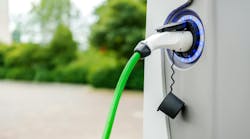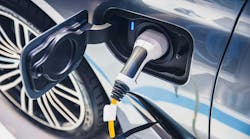Transportation electrification is creating enormous business opportunities for smart utility industry players. Over 1 million electric cars are driving U.S. roads, and over US$1 billion worth of utility investments to accelerate transportation electrification have been approved by U.S. regulators. Another US$1 billion plus is pending in the United States, and electric car sales continue to grow by double digits each year within the 50 states.
If any utility doesn’t already have a strategy in place to take advantage of this trend, here are a few simple steps to get that organization started on the road to electric transport:
- Consider the Benefits. For utilities, electrifying mobility is one of the most promising ways to replace declining load. Most charging naturally happens at home overnight, and charging is relatively easy demand to manage. Energy and Environmental Economics estimates that, in California, each electric car may be worth between US$2,778 and US$9,799 to a utility and its ratepayers. Promoting electric mobility also makes the utility part of the answer to climate change and makes it part of the air quality solution and strengthens utility relationships with customers. Charging load also creates growing opportunities for smart charging, demand response and vehicle-to-grid programs.
- Educate the Utility’s Own Team. In order to become a trusted and valuable resource to customers, utility staff should learn about and experience these vehicles. This should start with the utility team driving electric cars. Visit dealerships, talk with electric car owners and network with other utilities. Forth hosts free quarterly utility-focused webinars, and has recently published a white paper that can help utilities develop their strategies. Forth also organizes the leading electric mobility strategy conference in the United States, Roadmap, which brings together industry professionals each June. This year’s conference, in June 2019, will also feature a training session specifically designed for utilities interested in exploring transportation electrification.
- Educate Utility Customers. Even in California, where the electric revolution is most advanced, over half the consumers cannot correctly name a battery-powered car model. Utilities should play a major role in making customers more aware of the benefits of driving electric. Two out of three customers want their utility to play this role, according to a survey by the Electric Power Research Institute.
- Think Big. Transportation electrification is far more complex than simply promoting an energy efficient appliance. It more closely resembles a major market transformation effort — one that requires new partners to work together in new ways. For example, utilities will need to partner with car dealers and auto makers to ensure electric cars are available, and with charging companies, employers, and apartment building managers to provide charging opportunities. Utility strategies should also address quickly emerging vehicle segments like transit buses, trucks and school buses. Finally, utilities need to include thoughtful programs to help ensure electric mobility benefits traditionally underserved communities.
Our transportation systems are going electric, fast. Now is the time to make sure that the utility has a plan to make the most of this transition.


